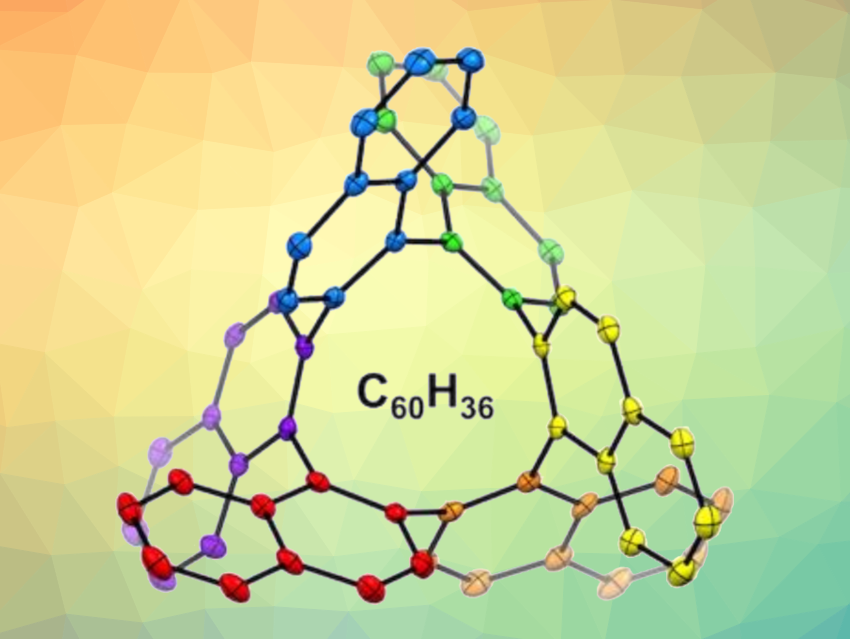Cyclo-para-phenylenes ([n]CPPs), in which phenylene units are linked at their 1,4-positions in a cyclic manner, can be useful, e.g., as building blocks for carbon nanotubes or in host-guest chemistry. The isomeric cyclo-ortho– and cyclo-meta-phenylenes are also known. Extending the phenylene units to naphthylene units in this type of cyclic compound can be useful to tune their properties. However, examples of 1,2-linked cyclonaphthylenes have remained limited to the tetramer ([4]cyclo-1,2-naphthylene) so far.
Kyoko Nozaki, The University of Tokyo, Japan, and colleagues have synthesized a chiral cyclic hexamer of naphthylene, [6]cyclo-1,2-naphthylene (simplified structure pictured). The team started from racemic 2,2’-dibromo-1,1’-binaphthyl, which was converted in a one-pot procedure. First, it was dilithiated using n-BuLi, followed by reactions with Co(tmhd)3 (tmhd = 2,2,6,6-tetramethyl-3,5-heptanedionate) and ferrocenium hexafluorophosphate (FeCp2PF6). After recrystallization, the desired product was isolated as racemate in a yield of 13 %.
The product was characterized using single-crystal X-ray crystallography, and the researchers found that a central twelve-membered ring was formed from the 1- and 2-carbons of the six naphthyl units. The crystals of the racemic product contained the two enantiomers in an alternately packed structure. The enantiomers could be separated by chiral high-performance liquid chromatography (HPLC). The team found that the separate enantiomers show circularly polarized
luminescence at 383[nbp]nm with a high photoluminescence quantum yield, which could be interesting for optical applications.
- Synthesis, Structure, and Optical Property of [6]Cyclo‐1,2‐naphthylene,
Masaki Hara, Naoyuki Toriumi, Masanobu Uchiyama, Kyoko Nozaki,
Chem. Eur. J. 2024.
https://doi.org/10.1002/chem.202402323




